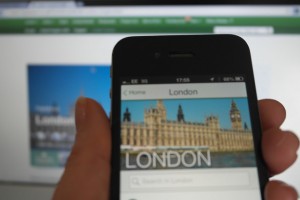Preparing for an international trip with your mobile phone requires research and planning. Get off the plane and just start using it, and you’ll be hit with a variety of fees and roaming charges, easily racking up several hundred dollars in a single week.
Whether you need the ability to call or just the ability to access data and text, the following tips will help you utilize your device to its fullest while keeping overall costs down.
Know your phone and your plan
All phones use either GSM (Global System for Mobiles) or CDMA (Code Division Multiple Access) as their radio systems to communicate with cell towers. GSM phones are unlocked and can be used with any carrier, while CDMA phones are locked to a specific carrier.
Read through your plan to make sure you know what the charges will be for international use, or if you’ll even be able to use your phone while abroad. If you have a GSM phone, you can switch out your SIM card with one in the country you’re visiting (more on that later). Otherwise, you may be able to purchase a temporary plan through your carrier.
If you have a CDMA phone, you may want to buy a pay-as-you-go phone once you arrive in your destination country.
See what you can get for free
Free is always good, right? And there are several options if you’re on a budget. There are multiple apps, chiefly WhatsApp, Viber, Google Voice, and Skype that provide free texting worldwide. (Bonus: Google Voice and Skype also give you the ability to make phone calls.) Wifi is usually free in hotels and some public spots, but its availability varies widely country to country.
Research your destination to determine how prevalent such spots are. While this has its risks, mainly hacking, if you’re careful what you use that free wifi for, you may be able to get along just fine without any kind of foreign plan.
Manage data usage
As you know, data can evaporate if unattended. By turning off international roaming, you’ll save those precious megabytes so you can use them the way you’d like to. Disable your apps from running in the background and reset them so they don’t automatically refresh. If you need to browse the web for something, the Opera mobile browser uses less data. You should also check with your carrier to see what kind of options are available as add-ons to your existing plan.
Buy a SIM card
For those with GSM phones, there are two types of SIM cards available: international and country-specific. International SIM cards can be bought online before you leave so that you’re ready to hit the ground running. You have to uninstall your own card and insert the temporary one, and sometimes that can be tricky.
A country-specific or local SIM card must be purchased in-country at a carrier’s store. Like the international version, it must be installed and registered. Depending on your destination, getting English assistance if you have a problem might be a challenge.
Both types of SIM cards are available with preloaded data, text, and calling plans. There are prepaid plans and pay by the day plans. Look for one that allows you to check how much data you’ve used in real time and add on in increments if you run low. Remember, though, that unless you have an unlocked, GSM phone, you don’t have this option.
Get a Mobile Storage Device
Lately, we’ve been seeing mobile storage devices that plug directly into your iPhone, and are not much bigger than a key fob. They store anywhere from 16 to 128 GB, and can be used to dump all your photos and videos, rather than trying to upload them to iCloud or Dropbox.
Dealing with mobile phones during an international trip may be complicated, but don’t despair. With proper research and a plan, you can get what you need on a budget you can afford.
How do you deal with your mobile phone on an international trip? Have you ever been stuck with a big bill? Or found a budget-saving secret you’d like to share? Tell us about it in the comments below, on our Facebook page, or in our Twitter stream.
Photo credit: Amy Wardlaw (Flickr, Creative Commons)

